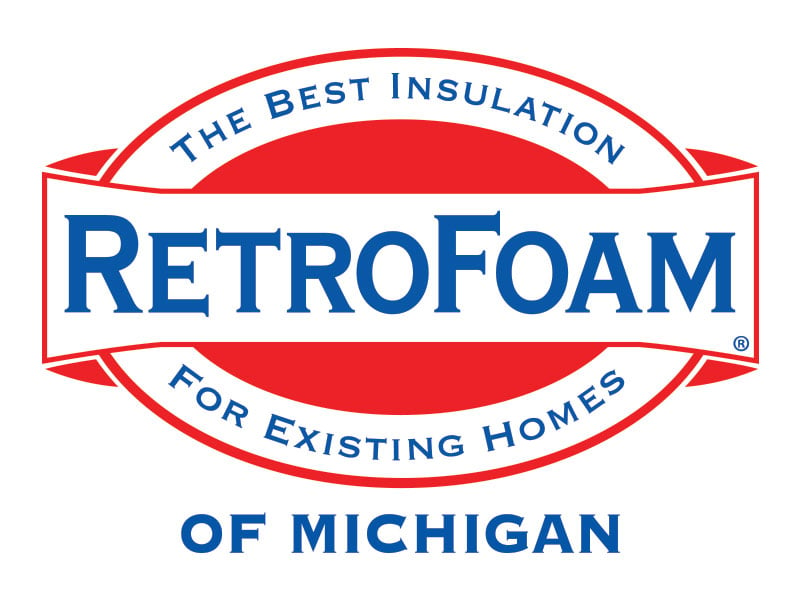Why is My House So Cold in the Winter?
injection foam insulation | spray foam insulation | existing home insulation


You're bundled up in a blanket, the furnace is cranked, and yet your house still feels like a walk-in freezer.
You can't help but wonder -- why is my house so cold even when the heat is running?
Whether it's the entire home or just one frosty bedroom, cold rooms can make your winter downright miserable. The good news? Once you understand why your house or room is cold, you can fix the issue and enjoy a more comfortable home.
At RetroFoam of Michigan, we've helped homeowners across the Lower Peninsula and greater Toledo area eliminate cold drafts and sky-high heating bills for more than 20 years.
Let's break down the most common causes of a cold house -- and how to finally warm things up.
Why is My House So Cold in the Winter?

The simple answer: cold air is sneaking in where it shouldn't.
When icy Michigan winds blow, they can find their way through every tiny gap and crack in your home's exterior -- especially around windows, doors, and poorly insulated walls.
1. Leaky Windows and Doors
If you're noticing drafts near your windows, they're likely letting cold air in and warm air out.
Here's what you can do:
- Seal around your windows with caulk or weatherstripping.
- Cover windows with clear plastic film during the winter months -- this can reduce heat loss by up to 25 percent, according to the U.S. Department of Energy.
- Check your doors for worn-out weather stripping and replace it if necessary.
These simple steps can make a noticeable difference, but they only go so far if the rest of your home is under-insulated.
2. Poor or Missing Insulation
Traditional materials like fiberglass or cellulose don't stop air movement -- meaning cold air still finds its way in.
That's why your house is cold, even with the furnace running nonstop.
Warm air naturally rises, escaping through the attic, while cold air seeps in through the walls, crawl space, and rim joist. Without a proper air seal, your heated air is literally leaking out.
Foam insulation -- whether injection foam in the walls or spray foam in the attic and crawl space -- creates that much-needed air barrier. This stops cold air from entering and traps the heat you're paying for inside, making your home comfortable year-round.
Why is One Room in My House So Cold?

Sometimes, it's not the entire home -- it's just one stubbornly cold room in the house.
You walk in, and it's 10 degrees colder than everywhere else. Here's why that happens.
The Cold Room is an Addition
If your cold room was added later, it may not have been insulated the same way as the rest of your house.
Adding insulation that seals air leaks can balance the temperature in that space.
There are No Heat Runs in the Cold Room
Sometimes, during construction, the HVAC system wasn't extended to reach the new space.
If there's no heat vent or return, no warm air is circulating -- leaving the room freezing. A licensed HVAC technician can help determine if additional ductwork or a mini-split system is needed.
The Room Faces the North or Northwest Side
In Michigan, bitter winds often come from the north.
Rooms facing that direction naturally feel colder -- especially if insulation and air sealing are lacking.
Foam insulation can help block those harsh drafts and create a consistent indoor temperature.
The Bonus Room Above the Garage Isn't Insulated
If your bedroom over the garage is cold, that's a big red flag for missing insulation.
Cold air from the garage rises into the floor of the room above it. By insulating the garage ceiling, you'll stop that air movement and make the space far more comfortable.
How to Fix a Cold Room or Cold House

When it comes to long-term solutions, the best way to fix a cold house or cold room is to focus on creating an air seal.
Foam insulation is designed to do exactly that -- it keeps warm air inside and cold air out.
Once your building envelope is properly sealed, your furnace won't have to overwork itself to maintain the temperature, and you'll finally feel that consistent warmth throughout every room.
Not sure if insulation is your problem? Look for other telltale signs -- like high energy bills, drafts, cold floors, or uneven temperatures.
Download our "18 Signs and Symptoms It May Be Time to Update Your Insulation" checklist to find out if your home is due for an upgrade.
Key Points
- Why is my house so cold? Cold air is entering through leaks and poor insulation.
- Why is one room so cold? It could be an addition, lack of ductwork, or poor insulation over the garage.
- Air sealing matters. Foam insulation creates a continuous barrier that stops heat loss.
- Traditional insulation isn't enough. Fiberglass and cellulose allow air movement, reducing comfort.
- The fix: Seal your home with injection or spray foam insulation for consistent, cozy comfort.
Related Articles
Why is My Gas Bill So High in the Winter?
10 Reasons to Insulate Your Home Before Winter
About Amanda Emery
Amanda previously has worked as a breaking news and crime reporter, TV news producer, and editor in Flint and Detroit. Throughout her career as a journalist, she has won several awards from The Society of Professional Journalists - Detroit Chapter and the Michigan Press Association. As part of the RetroFoam of Michigan family, Amanda uses her experience as a journalist to write content that will help educate homeowners on the benefits of foam insulation. When Amanda isn’t writing, she’s spending time with her husband and rescued huskies. She also loves knitting, making art, cooking, and hosting dinner and a movie night for friends and family.


